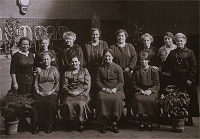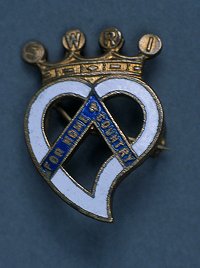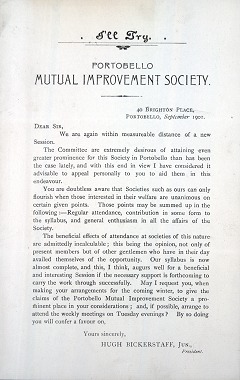Contents ![]() | Institutes of learning
| Institutes of learning ![]() | Sources
| Sources ![]()

Learning Organisations
Many of the 19th century initiatives discussed on the pages above were run by men for men. But by the end of the century there was growing pressure for similar provision for women. Working class women in particular were without a voice. However, they were, in their millions, members of co-operative societies.
From 1892 the co-operative movement provided a new outlet for many women through women's guilds. Participating women engaged with many of the hot topics discussed by the male establishment, particularly where they might affect their own lives: suffrage, unemployment or pensions. Through the guilds women were able to participate in politics. Many guilds were affiliated to the Labour Party and their tradition of radicalism persists today.

Despite the development of women's guilds and the success of the suffragettes in winning the right to vote, there was one group of women that remained isolated, those in the rural parts of Scotland. After the battle for universal suffrage was won, Catherine Blair, a former suffragette, turned her formidable skills towards this sector. She was a farmer's wife and knew the problems that the womenfolk near the farm experienced. The result was the formation of the first rural institute at Longniddry in East Lothian. The movement filled a void and grew rapidly.

Not all of the new movements of the 19th century were at the radical edge. Others catered to more leisured interests or simply the desire to learn in an atmosphere of mutual improvement. Even here men and women were sometimes segregated but on the whole literary and reading societies were open to both sexes .
In this section:
Women's Co-operative Guilds | Scottish Women's Rural Institute | Literary and debating societies
Contents ![]() | Institutes of learning
| Institutes of learning ![]() | Sources
| Sources ![]()